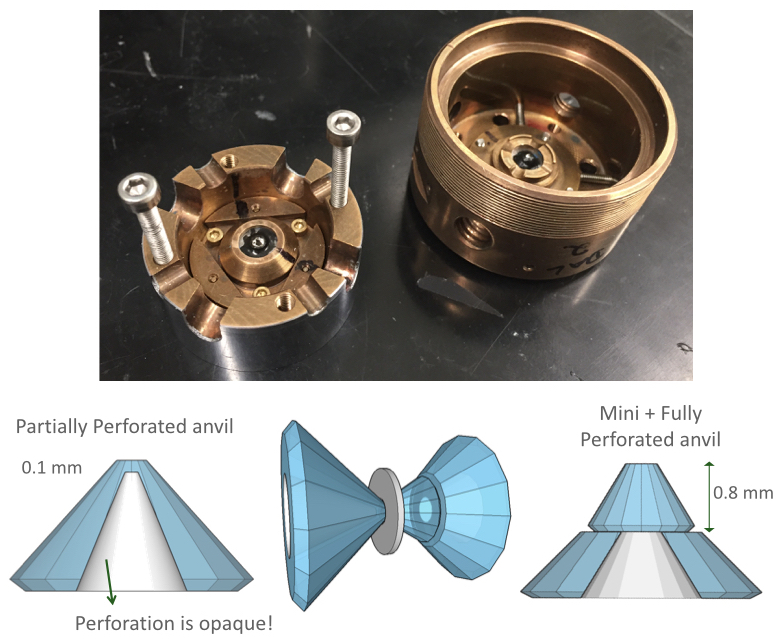|
The high pressure spectroscopy setup at 4-ID-D is optimized for X-ray Near Edge Spectrocopy (XANES) and X-ray Magnetic Circular Dichroism (XMCD) measurements. |
| 4-ID-D Beamline |
|
| Pressure Cell |
|
Almax-Easylabs OmniDAC
|
| Sample |
|
Carefully preparing the sample to be placed in the high-pressure chamber is a critical step for a successful XANES/XMCD measurement. The first aspect to be assessed is the sample's x-ray absorption length at the relevant energies. The sample thickness should be such that the absorption edge jump is between 0.5-1.5, while maintaining the total absorption length below ~ 2.5. The optimal thickness can be calculated using the tabulated x-ray cross sections (this should be done well ahead of your experiment, please communicate with your local contact if you need help). The second aspect is that the thickness needs to be homogeneous over the x-ray beamsize. This means that powder samples need to be well ground (grain size typically < 2-5 microns), and single crystal samples need have well defined faces. An inhomogenous sample will largely increase the measurement noise, leading to longer scans.
|

